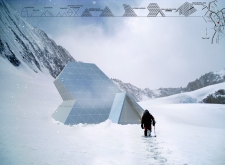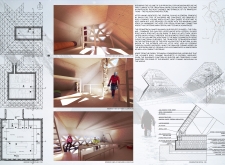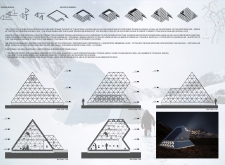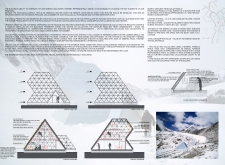5 key facts about this project
At its core, the project represents an innovative interpretation of public space, designed to foster collaboration and interaction among its users. With a primary function as a community center, it emphasizes inclusivity and accessibility, inviting a diverse range of activities that cater to a variety of demographics. The design integrates multipurpose spaces that can adapt to different uses, from workshops and social gatherings to educational events and exhibitions. This adaptability is a hallmark of the project, enabling it to respond to the evolving needs of the community it serves.
The architectural language employed in the project is characterized by its use of organic forms and fluid lines that resonate with the natural landscape. The integration of green spaces not only enhances the user experience but also reinforces the project’s commitment to environmental sustainability. The careful selection of plant species and the installation of green roofs contribute to biodiversity, support local ecosystems, and improve air quality, making the project a model for future developments.
Materiality plays a crucial role in defining the architectural identity of the project. A palette of locally sourced materials has been chosen to reinforce the connection between the building and its site. The use of natural stone and timber imparts a warm, inviting quality to the façade, while large expanses of glass create transparency and encourage visual connections with the outdoors. These materials are not only aesthetic choices but also reflect a sustainable ethos, as they minimize the environmental impact through reduced transportation emissions and promote the use of renewable resources.
Significant design features within the project include the expansive atrium, which serves as a central gathering place. This space maximizes natural light, promoting a sense of openness and community. The integration of artwork and installations further enhances the atmosphere, inviting visitors to engage with the space and each other. The careful consideration given to acoustics in this area ensures that it can accommodate a variety of activities without compromising comfort.
The project uniquely employs strategies that address climate resilience. For instance, the roof design incorporates overhangs and shading devices that mitigate heat gain while ensuring adequate natural light enters the interior spaces. Rainwater harvesting systems and permeable paving are notable features that demonstrate a thoughtful approach to resource management, aimed at reducing the building's overall ecological footprint.
In terms of layout, the spatial organization is intentional, allowing for seamless movement between different areas of the center. Clear sightlines and strategic placement of communal amenities encourage interaction and create a sense of cohesion throughout the space. The integration of both indoor and outdoor areas blurs the boundaries of the building, promoting a versatile environment conducive to social engagement.
What sets this project apart within the broader context of contemporary architecture is its emphasis on community involvement in the design process. Through engagement sessions and feedback loops, the design team was able to tailor the architectural solutions to better align with the desires and needs of the community. This participatory approach is a testament to the belief that architecture should be a collective endeavor, reflecting the values and aspirations of its users.
This project stands as an embodiment of how contemporary architecture can effectively address challenges such as sustainability, social inclusion, and community development. Its design not only enriches the urban fabric but also reinforces the importance of nurturing relationships within communities. For readers interested in a comprehensive understanding of the architectural nuances and technical details, exploring the architectural plans, sections, and elevations will provide deeper insights into this innovative design. The project invites further scrutiny and appreciation for its thoughtful execution and the myriad ways it contributes to enhancing the quality of life for its users.


























